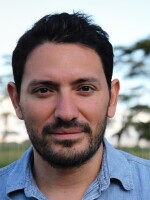Today, the second round of the Federal Reserve's stimulus came to an end. In an interview with CNBC, former Federal Reserve Chairman Alan Greenspan said the second round of quantitative easing — or QE2 as it's come to be known — did very little.
Here's the key passage from the interview:
"It obviously had some effect on the exchange rate and the exchange rate was a critical issue in export expansion. Aside from that, I'm ill aware of any endeavor — anything that really worked.
"Let me tell you why. Not only QE2 but QE1 has not been spent. A trillion and a half dollars, which is excess reserves have, to my estimation, not been spent. The way you can tell that is that the money multiplier, a ratio of the expansion of credit in the commercial banks and the monetary base, which reflects the expansion of the federal reserve balance sheet, that has changed not at all. You can see it in the fact C&I loans are rarely moving. Mortgages, if anything, are weakening in numbers and consumer credit is very dull, so that there is no evidence that huge inflow of money into the system basically worked."
In layman terms, what Greenspan is saying is that stimulus failed because banks are not lending and consumers are not borrowing. CNN reports that Greenspan, who makes his living as a consultant these days, has been making the rounds espousing a rather bleak outlook on the U.S. economy. Specifically, he thinks it's "almost certain" that Greece will default and that would destabilize the European economy and ripple to the U.S.
As for his opinion on the fed's quantitative easing policy, Times' The Curious Capitalis t rounds up a great deal of opinion from economists and the kind of hard line that Greenspan seems to be taking is difficult to find. Some of them said the policy was a failure because it benefitted Wall Street but not Main Street, while others called it positive because it staved off a Japan-style stagnation.
Stephen Gandel at Time takes the middle lane:
And I guess that's where I come down on QE2. You can't really call it a failure because I don't think anyone was really worse off because of it...
So at the end of the day, QE2 really didn't cost us anything. The Fed used the $600 billion in created to buy U.S. debt, so that really is a net zero...
Perhaps the thing that was the most damaged in QE2 was the Fed itself, or at least our estimation of what it can do... What is clear now, in a way that wasn't before QE2, is that the Fed's power to revive the economy is limited at best. The policies that put money in the system and lower interest rates can only do so much... It is clear now that if we want the economy to rebound faster [than] it is, the President and Congress are the ones that needs to step in and do more in terms of stimulus, either by spending money or cutting taxes. Helicopter Ben can't do it alone. Perhaps now that we have learned that lesson, we can do what we need to do to get the economy back on track.
Copyright 2020 NPR. To see more, visit https://www.npr.org. 9(MDAxNDQ2NDAxMDEyNzU2NzM2ODA3ZGI1ZA001))




